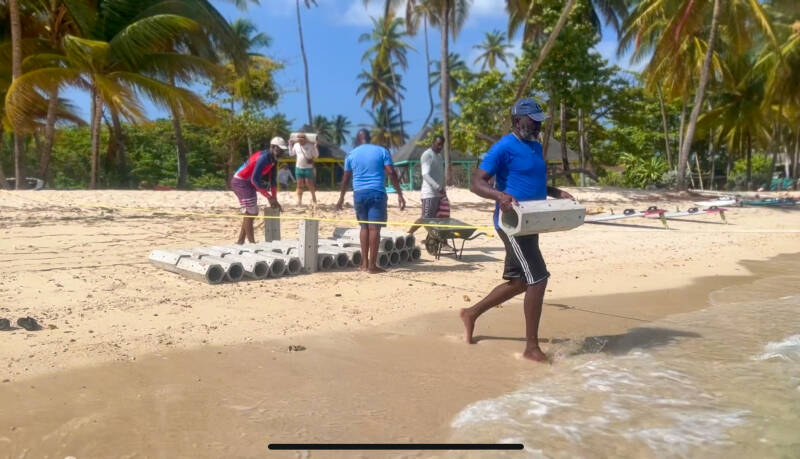Tobago, Trinidad & Tobago
The Buccoo Reef Marine Park (BRMP) is located at the southwest tip of Tobago. The park spans an area of 7 sq km and consists of five reef flats that enclose a shallow reef lagoon and a mangrove swamp. Half of all visitors in Tobago go to the park and the economic contribution of tourism associated with The Buccoo Reef Marine Park has been estimated at 7 - 8.8 million USD per year. However, the combination of tourism and residential development, along with limited enforcement of park regulations, has resulted in the deterioration of Buccoo Reef's health. With no more coral reefs, marine biodiversity decreases and tourism numbers will drop, resulting in less economic activities and higher unemployment rates. As a solution a we have started a collaboration with the Buccoo Reef Trust, the Tobago House of Assembly, Institute of Marine Affairs and Boskalis, a coral reef restoration plan has been developed.
Stage 1: Pilot installation
In the beginning of 2024 the ReefSystems team arrived in Tobago. A meeting with the Secretary for Food Security, Natural Resources, Environment, and Sustainable Development (Nathisha Charles-Pantin), was set up to present the restoration plan. The secretary was very enthusiastic and gave approval to install the first pilot reefs in the Buccoo Reef.
Stage 2: Monitoring effect on nature enhancement
3 identical reefs have been installed at 3 different locations within the Buccoo Reef
Experiment set up & monitoring plan
- 1x reef with transplanted corals
- 1x reef with coral larvae tiles
- 1x reef without transplants or larvae tiles (empty reef)
With this research we want to determine the following:
- Timeframe for natural settlement of coral larvae
- Coral species that settle on reefs
- Survival rate of different corals on the structure
- Accumulation of biomass
- Increase of biodiversity
- Reproduction of species
- Stability of reefs on substrates (sand & rubble)
- Does transplantation of corals onto the structure can speed up these processes.
The monitoring will be done by divers that periodically visit the reefs. With videos, photos and fish count surveys the effects will be determined.
Stage 3: Scale up restoration efforts through community involvement
When the monitoring program show a positive effect on the local marine ecosystem, new funding can be attracted to set up a coral nursery program. With the cultivation of new corals that can be transplanted onto the artificial reef structures, it is possible to kickstart the growth of a new, resilient coral reef over time. By setting up a local production facility for the modular reef units, we can create new jobs for the local community, while restoring a larger part the Buccoo Reef. With our ongoing restoration efforts we hope to set a positive change in motion for the environment and the people of Tobago.














